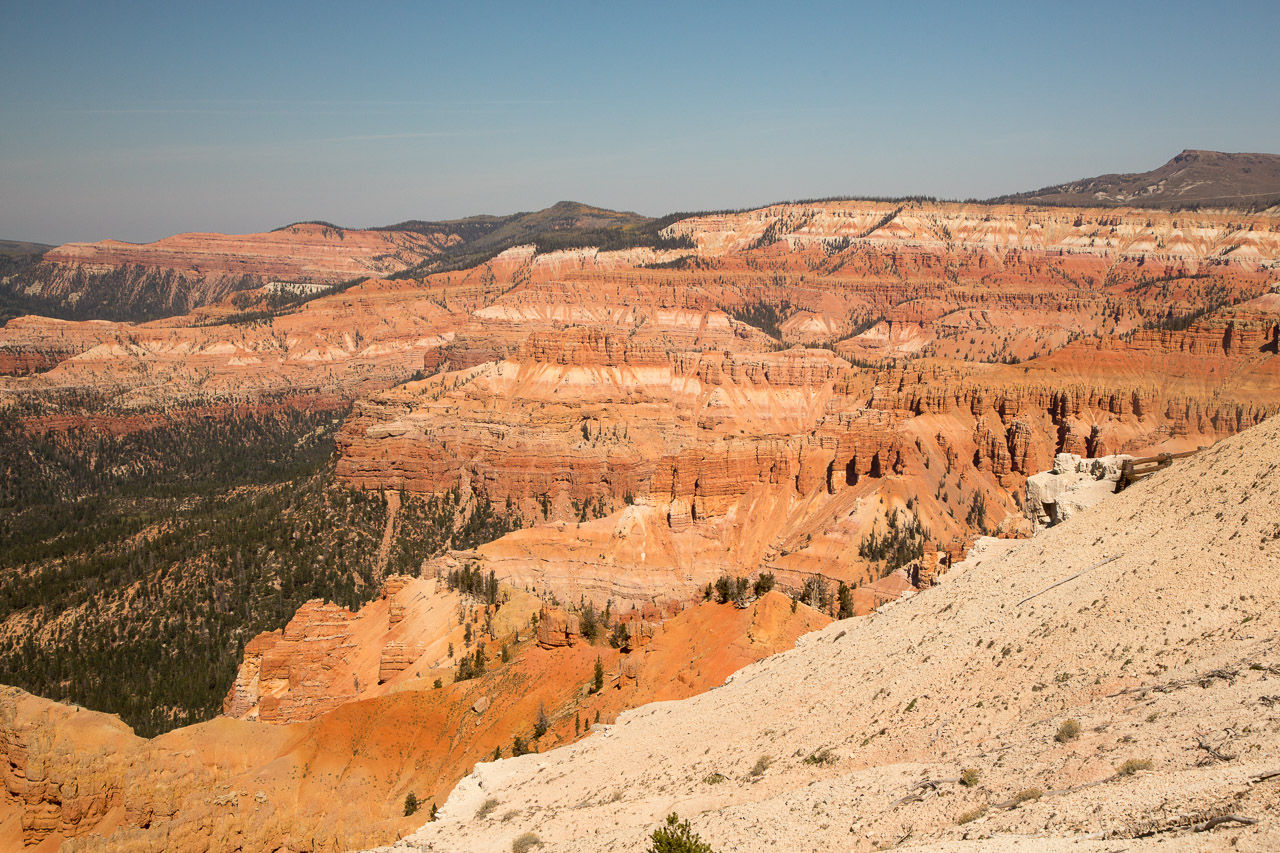
Cedar Breaks National Monument - Utah
The amphitheater, located near the west end of the Colorado Plateau, covers the west side of the Markagunt Plateau, the same plateau that forms parts of Zion National Park. Uplift and erosion formed the canyon over millions of years, raising and then wearing away the shale, limestone, and sandstone that was deposited at the bottom of an ancient 70 by 250 miles (110 km × 400 km) lake, known as Lake Claron about 60 million years ago. It continues to erode at a pace of about 2 inches (50 mm) every 5 years. Atop the plateau, volcanic rock known as rhyolitic tuff covers much of the area, formed during cataclysmic eruptions around 28 million years ago.
The rocks of the eroded canyon contain iron and manganese in various combinations, providing brilliant colors that led Indians to call it the Circle of Painted Cliffs. Iron oxides provide the reds, oranges and yellows, while manganese oxides provide shades of purple. The color of rock is soft and subtle compared to the hoodoos at Bryce Canyon.
The area is a form of badlands—canyons, spires, walls, and cliffs so steep and confusing that the land, while of great aesthetic value, are of little utilitarian worth. Early settlers called them badlands or breaks and created its current name by combining breaks with cedar for the many juniper trees (often incorrectly called cedars) that grow in the area.
Cedar Breaks National Monument was established in 1933. A small lodge, designed by Gilbert Stanley Underwood and built and operated by the Utah Parks Company once existed near the south end of the monument, but it was razed in 1972. The Cedar Breaks Lodge was the smallest of the park lodges in the Southwest. It was deemed "uneconomical to operate" by the Park Service, but protests associated with its demolition caused the Park Service to re-examine its policies concerning lodges in other parks, contributing to their preservation. (Wikipedia)




















